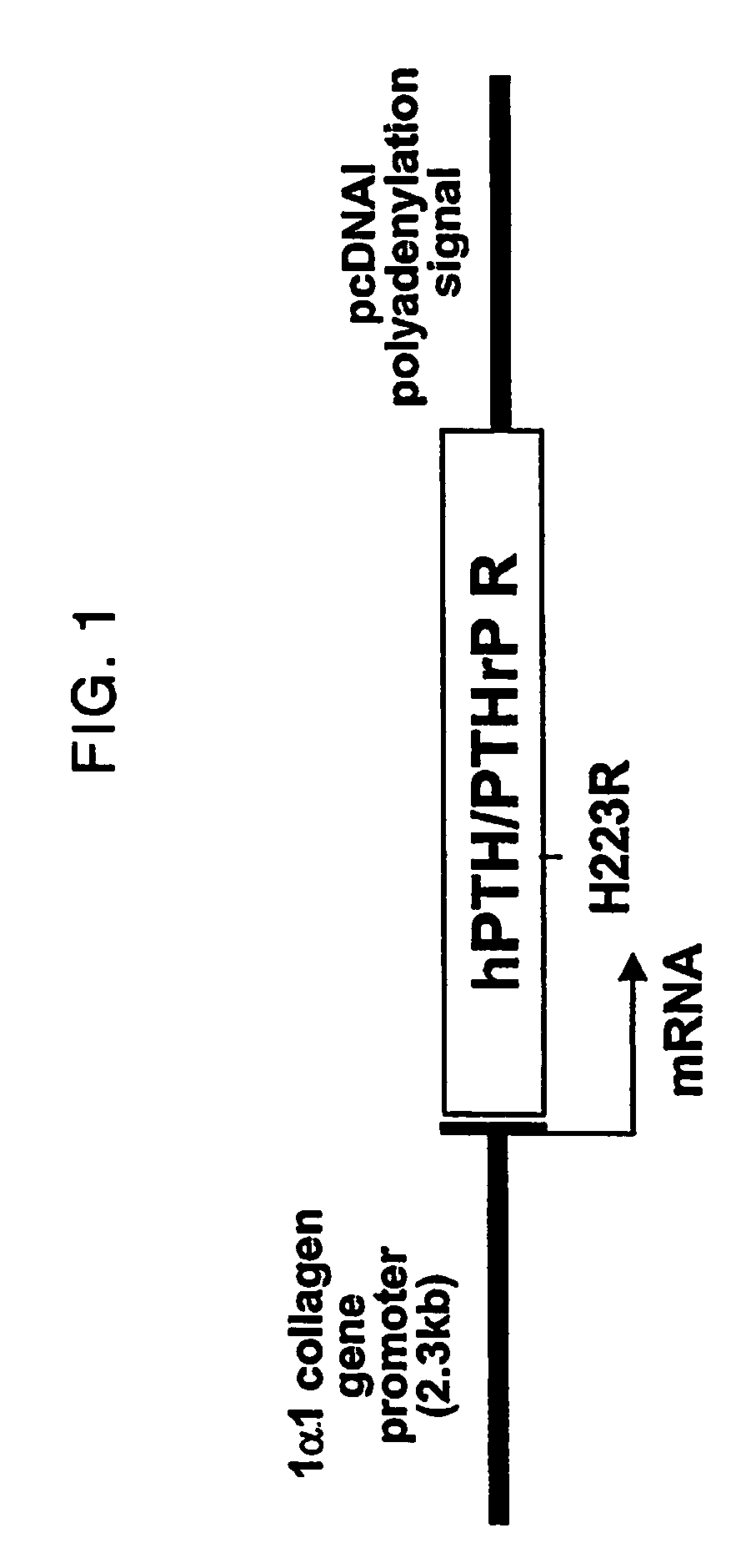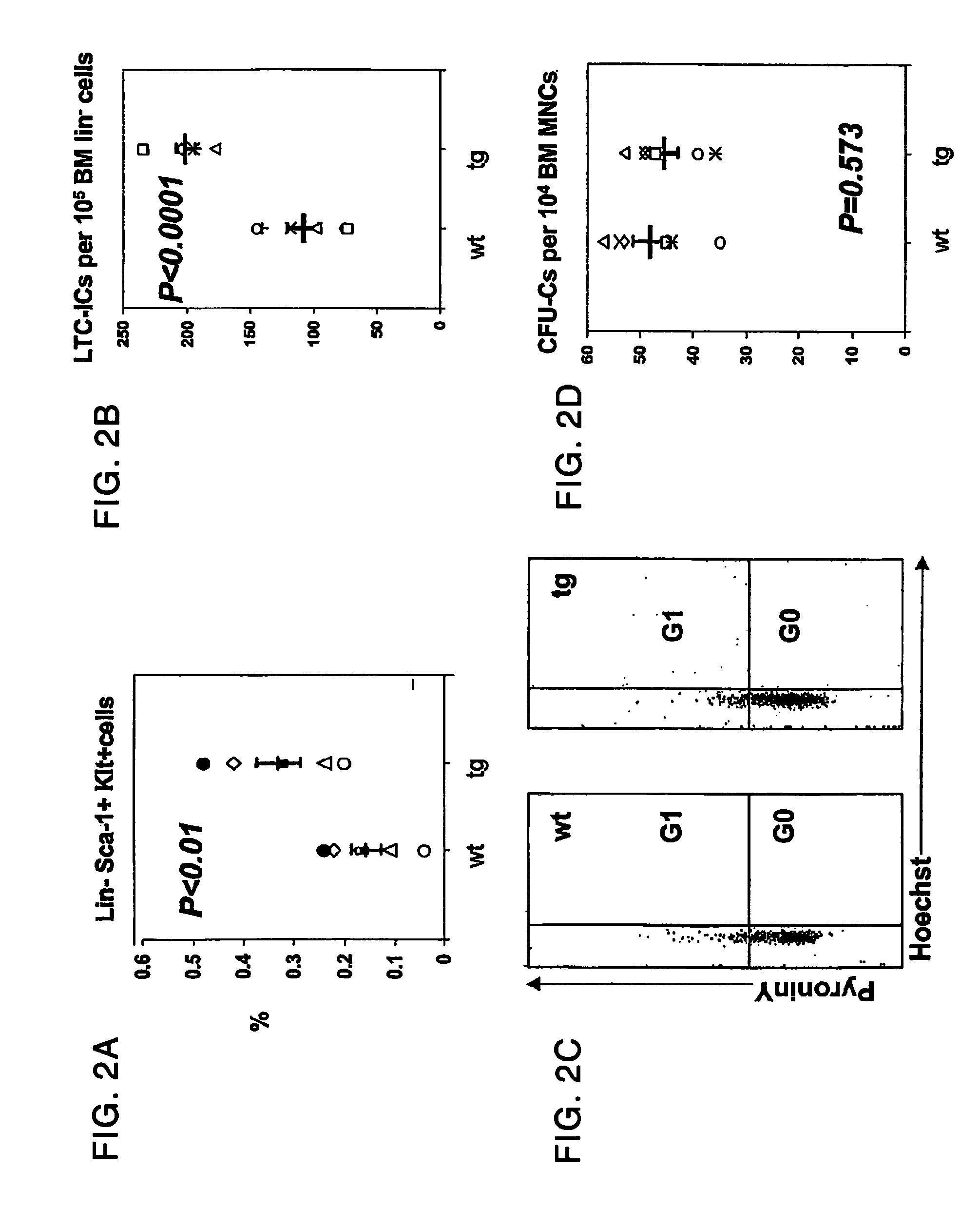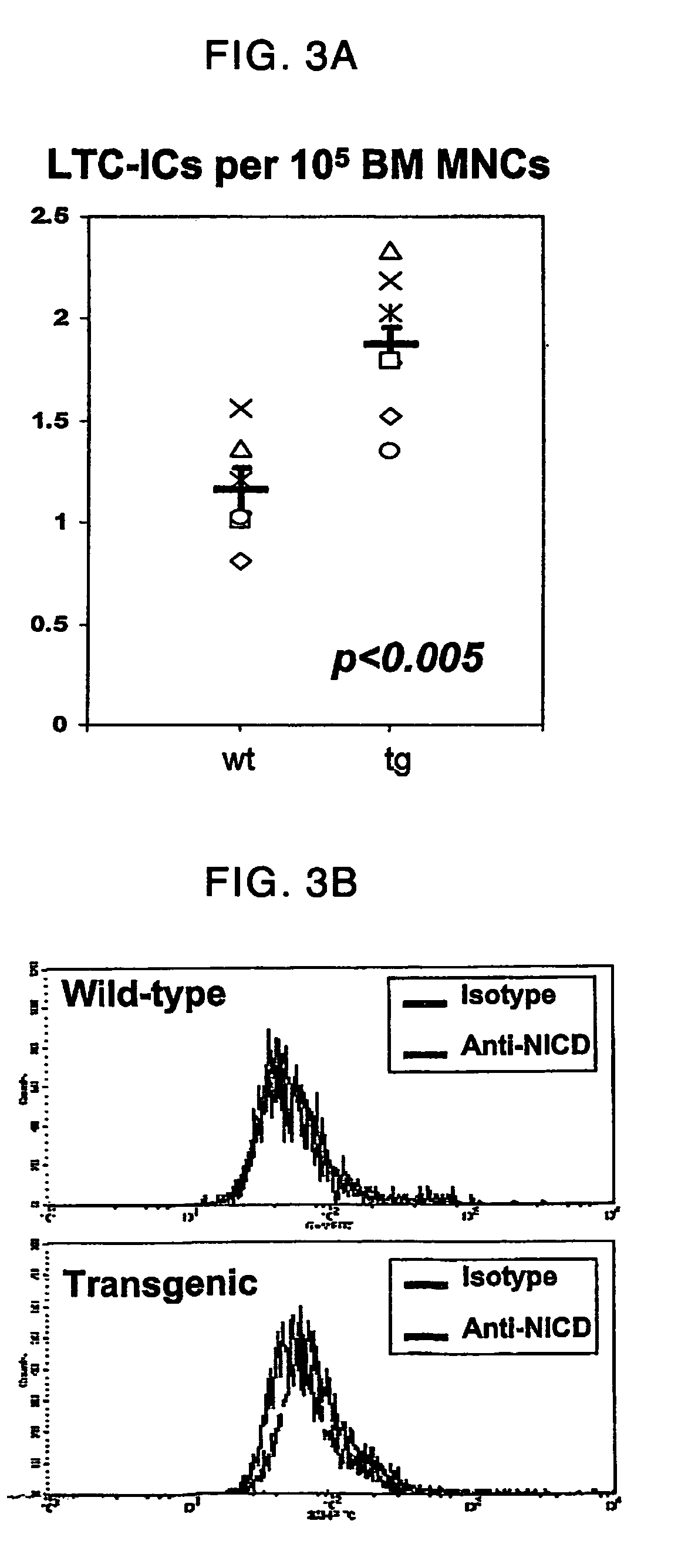Parathyroid hormone receptor activation and stem and progenitor cell expansion
a technology of parathyroid hormone and stem cells, applied in the field of parathyroid hormone receptor activation and stem and progenitor cell expansion, can solve the problems of not providing a complete understanding of progenitor cell localization, none of these methods have been overwhelmingly successful, and none of these methods have been used successfully. to achieve the effect of increasing stem replication
- Summary
- Abstract
- Description
- Claims
- Application Information
AI Technical Summary
Benefits of technology
Problems solved by technology
Method used
Image
Examples
example 1
Materials and Methods
[0179]Identification of Transgenic Mice. Mice expressing a constitutively active PPR under the control of the 2.3 kb fragment of the mouse α1(I) collagen promoter (Rossert et al., 1995, J. Cell. Biol., 129:1421-1432) were previously generated (Calvi et al, 2001, J. Clin. Invest., 107:277-286). The transgene construct (FIG. 1a) contained the 2.3 kb fragment of the mouse α1(I) collagen promoter, 1,880 bp encoding the human mutant PPR HKrk-H223R (Calvi et al., 2001, J. Clin. Invest., 107:277-286), and 750 bp from the pcDNAI vector (which provides a splice sequence and the consensus polyadenylation signal absent in the cDNA encoding HKrk-H223R). Genotypying and determination of number of insertion sites of the transgene were performed as described (Calvi et al., 2001, J. Clin. Invest., 107:277-286). All studies performed were approved by the institutional animal care committee.
[0180]Transgene expression. To confirm transgene expression by in situ hybridization, a 59...
example 2
Transgenic Mouse Experiments
[0193]Transgenic mice expressing a constitutively active PPR in cells of the osteoblastic lineage have bone marrow fibrosis and anemia. At 2 and 12 weeks of age, the long bones of the col1-mutPPR mice were characterized by abundant trabeculae and marrow fibrosis. At 12 weeks of age, the long bones of the col1-caPPR mice were histologically examined and demonstrated abundant trabeculae with reduced volume of the marrow space in the metaphyseal area. Given the modest contribution of the metaphyseal area to the total marrow space of the long bones, the magnitude of the reduction in the total bone marrow space in the long bones of the adult transgenic mice was minimal. There was an expansion of the trabecular osteoblastic population as defined by staining with osteocalcin, alkaline phosphatase, collagen type I, osteopontin and MMP-13 (Calvi et al., 2001, J. Clin. Invest., 107:277-286). Hematopoietic cells were found in small regions between trabeculae and few...
example 3
Transgenic Cell Experiments
PPR Transgenic Osteoblastic Cells Highly Express IL-6, SCF, and SDF-1.
[0196]Immunohistochemistry was used to assess levels of Interleukin 6 (IL-6), kit ligand or Stem Cell Factor (SCF) and Stroma-derived Factor 1 (SDF-1) in the transgenic cells among the metaphyseal trabeculae. These cells have been previously shown by in situ hybridization to be a heterogeneous population of osteoblastic cells (Calvi et al., 2001), and immunohistochemistry for Osteopontin, a marker of osteoblastic cells, confirmed these data. In wild-type animals, only a few osteoblastic cells express these factors. In contrast, high levels of IL-6 were detected heterogeneously in the osteoblastic cells of transgenic animals. Expression of SDF-1 was diffuse, while SCF was present at high levels mainly in the more mature cells lining the trabeculae. To address whether diffusible cytokines could account for the effect on primitive cells, LTC-ICs were performed with a semi-permeable membrane...
PUM
| Property | Measurement | Unit |
|---|---|---|
| time | aaaaa | aaaaa |
| time | aaaaa | aaaaa |
| time | aaaaa | aaaaa |
Abstract
Description
Claims
Application Information
 Login to View More
Login to View More - R&D
- Intellectual Property
- Life Sciences
- Materials
- Tech Scout
- Unparalleled Data Quality
- Higher Quality Content
- 60% Fewer Hallucinations
Browse by: Latest US Patents, China's latest patents, Technical Efficacy Thesaurus, Application Domain, Technology Topic, Popular Technical Reports.
© 2025 PatSnap. All rights reserved.Legal|Privacy policy|Modern Slavery Act Transparency Statement|Sitemap|About US| Contact US: help@patsnap.com



